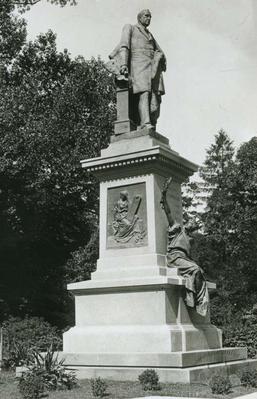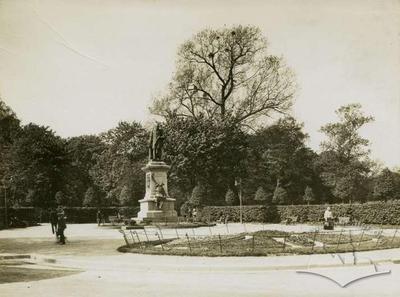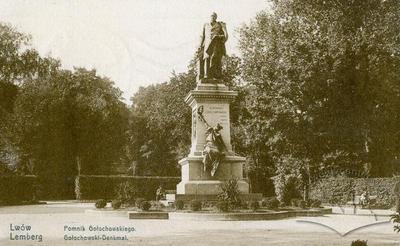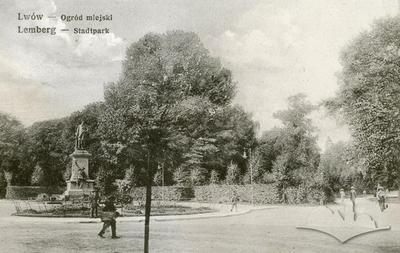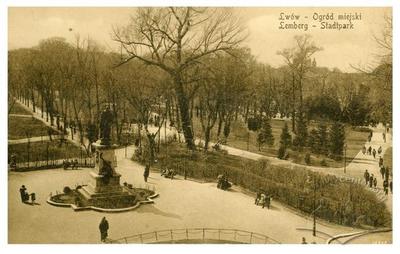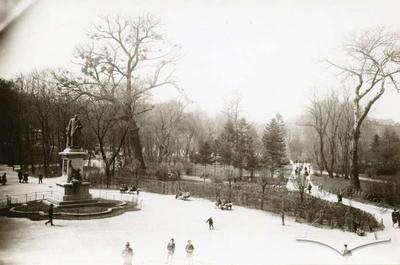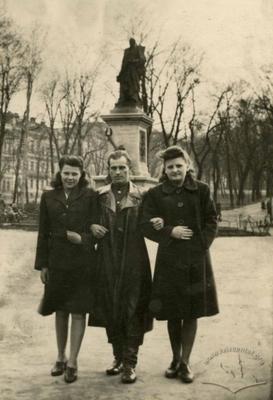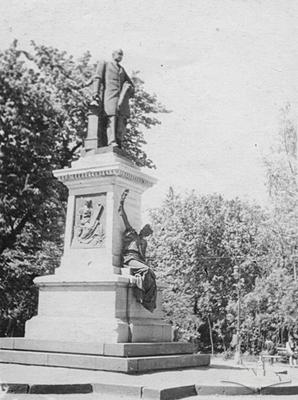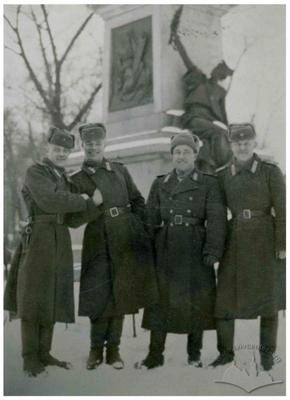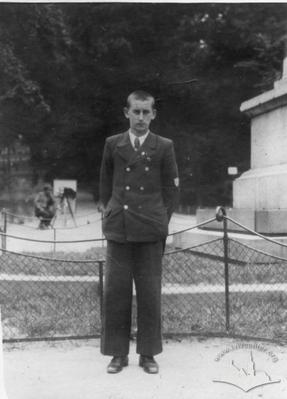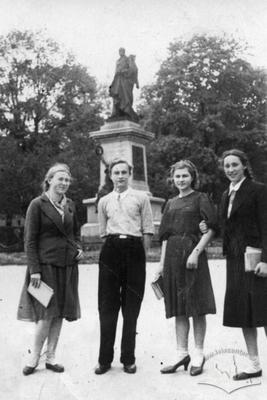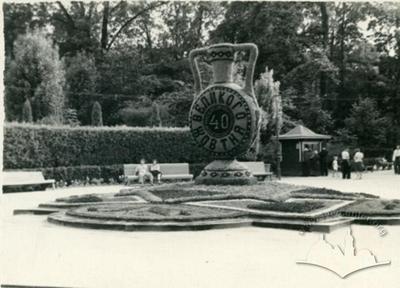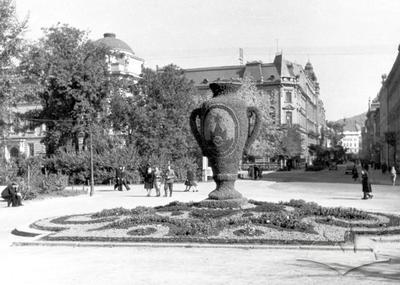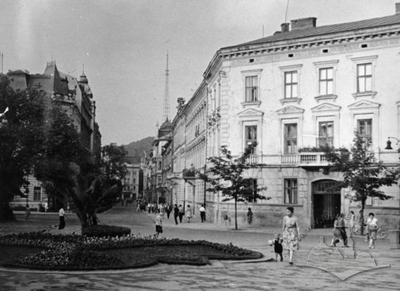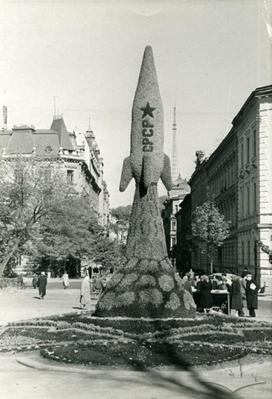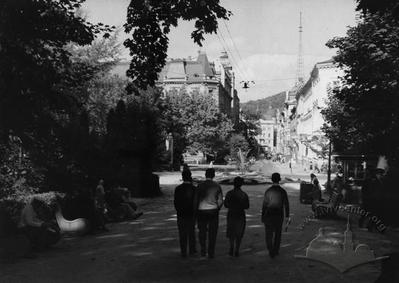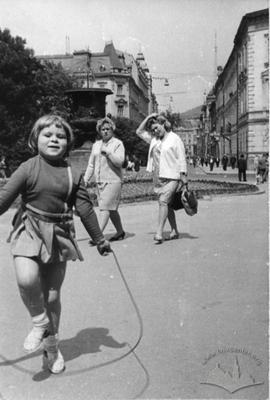
Territory of Ivan Franko Park – monument to Agenor Goluchowski (does not exist) ID: 101
A monument to this Polish and Austrian politician, the governor of Galicia, was opened on 28 June 1901. It was designed by Paris-based Polish sculptor Cyprian Godebski. After the Second World War the monument disappeared under unknown circumstances; today a decorative vase is installed in its place.
Story
Agenor Romuald Gołuchowski (1812-1875), who descended from a Polish aristocratic family, was a well-known Polish and Austrian politician. After the Spring of Nations in 1848, he became the governor of Galicia and spent several terms in this office: 1849-1859, 1866-1868, 1871-1875. From 1859 he was the Minister of the Interior of the Austro-Hungarian Empire. In 1865 he was elected deputy of the Imperial Council in Vienna, and in the same year a square in Lviv was called in his honor; it was there that later, at the turn of the century, the Great City Theater (now Opera Theater) was built.The place for the monument was chosen in the lower part of the former Jesuit Park (now the Ivan Franko Park), near the building of the Galician Sejm and not far from the palace which Gołuchowski built for himself (its present-day address is vul. Lystopadovoho Chynu, 16). This location was chosen in particular due to the fact that it was thanks to Gołuchowski that the territory of the south-eastern part of the park, where today Krushelnytskoi street with its buildings is located, became the property of the city in 1855. Before, it had belonged to the state; there had been wood warehouses (ger. K. K. Holzlegstätte) on these several parcels.
The ceremonial opening of the monument took place on 28 June 1901, being a significant event in the city (Gazeta Lwowska, 1901, No. 146, 1-3).
After the Second World War, the monument disappeared under unknown circumstances. During the Soviet period, its place was occupied by a flower bed with figures of flowers and clipped bushes. Today there is a decorative vase there. Previously, this vase stood in front of the Galician Sejm building, which later became the main building of the Jan-Kazimierz University (now Lviv Ivan Franko National University). After the square was rearranged and the monument to Franko was installed, it was removed.
Architecture
The monument was located in the lower part of the Jesuit garden, on its main alley, which runs parallel to present-day Krushelnytskoi street. Thus, it stood at an intersection of roads and could be seen from afar well: on the one hand, it limited the park's main alley and, on the other hand, it closed ul. Trzeciego Maja (now vul. Sichovykh Striltsiv) perspective. In addition, it was also clearly visible from the west, that is from ul. Juliusza Słowackiego.The monument, 3 meters high, was made of marble and bronze figures. On a two-step stylobate, there was a base with a wide cornice, where an allegorical female figure of Galicia sat, handling with her stretched right hand a laurel wreath to the politician. There was an order pedestal on the base, with bronze reliefs on the sides; on top of it, a bronze statue of Gołuchowski was installed. The politician was depicted dressed in a long coat, with his head raised and a thoughtful expression on his face. He held some papers in his right hand and leaned against the pedestal. With his left hand he held a cloak that fell from his shoulder and covered his legs with wide folds. In front of the pedestal, there was the following inscription, carved in stone: HR. Agenorowi Gołuchowskiemu Rodacy MDCCCCI; on the right, there was a relief depicting the declaration of the constitution and an inscription reading: Dyplom 20 października MDCCCLX; on the left, there was a relief depicting the return of Gołuchowski from Vienna to Lviv to the office of the governor of Galicia and an inscription reading: MDCCCXLIX – MDCCCLXXV; in the rear, there was a relief with an allegory of schooling and an inscription reading: Szkolnictwo ludowe.
Like other works of the sculptor, such as the monument to Mickiewicz in Warsaw, each element of the monument was of a different color. The stylobate was made of local black stone, the base was made of pink Milan granite, the pedestal was made of ash-grey granite of the same origin, the figure of Galicia was made of greenish bronze shot with gold that resembled Florentine Renaissance bronze sculptures, and the statue of Gołuchowski was made of white Carar marble shot with blue, the so-called claire de lune (Gazeta Lwowska, 1901, No. 146, 1-3).
Related buildings and spaces
Sources
- Державний архів Львівської області (ДАЛО) 3/1/4009;
- "Pomnik Agenora hr. Gołuchowskiego", Gazeta Lwowska, 1900, №8, 2-3;
- "Agenor hr. Gołuchowski (Uroczystość odsłonięcia pomnika)", Gazeta Lwowska, 1901, №146, 1-3;
- Jurij Biriulow, "Lwowski okres twórczości Cypriana Godebskiego", Rzeźba Lwowska, (Warszawa: Wydawnictwo Neriton, 2007), 70-74.
Urban Media Archive Materials
